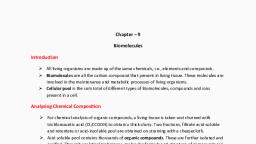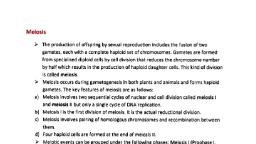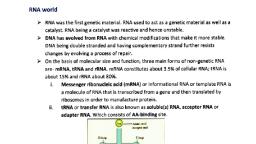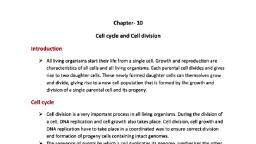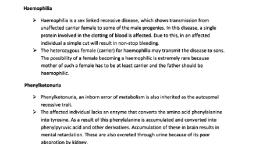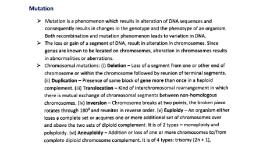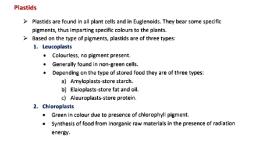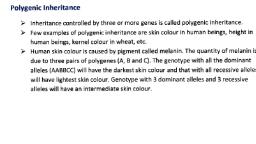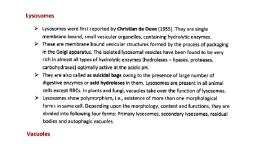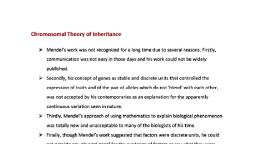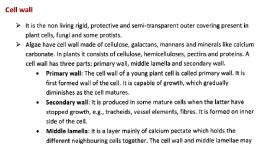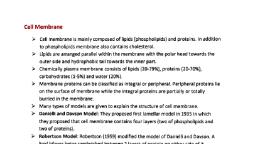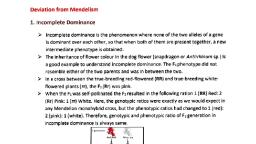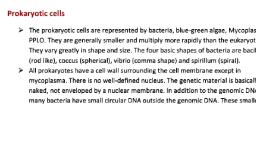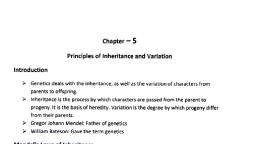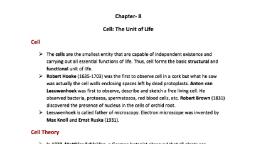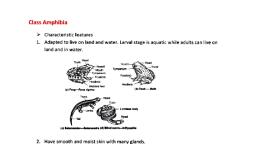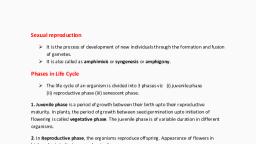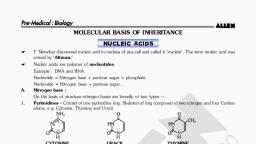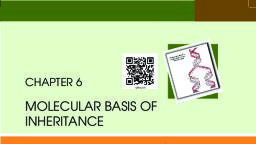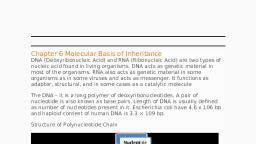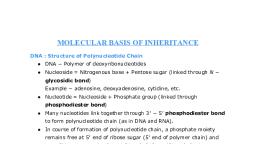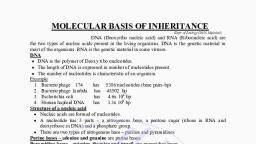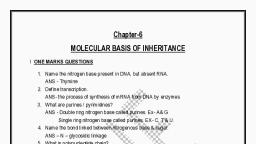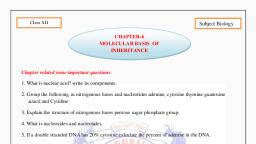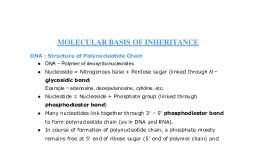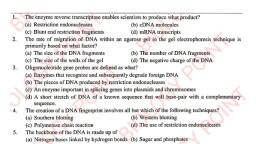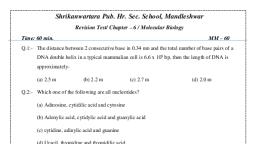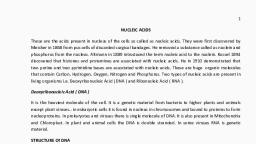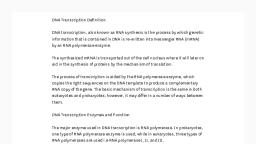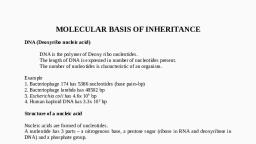Page 1 :
Chapter 6, , Molecular basis of inheritance, Introduction, Deoxyribonuclelc acid (DNA) and ribonucleic acid (RNA) are the two types of nucleic, acids found in living systems., , DNA acts as the genetic material in most of the organisms., RNA acts as a genetic material in some viruses, mostly functions as a messenger., , RNA also functions as adapter, structural and in some cases as a catalytic molecule., The DNA, DNA is a long polymer of deoxyribonucleotides. DNA is the macromolecule which, consists of two complementary strands of deoxyribonucleotides that run, , antiparallely and are held together by hydrogen bonds between their opposite, nitrogen bases. It consists of four types of basic units called nucleotides. The length, , of DNA is usually defined as number of nucleotides present in it and is the, characteristic of an organism., For example, a bacteriophage known as X, , 174 has 5386 nucleotides., , Bacteriophage lambda has 48502 base pairs (bp), Escherichia coli has 4.6 X 105 bp, , and haploid content of human DNA is 3.3 X 10° bp., , Structure of Polynucleotide Chain, A nucleotide has three components a, , nitrogenous base, a pentose sugar and a, , phosphate group. The nitrogenous bases are of two types-purines (adenine and, guanine) and pyrimidines (cytosine, uracil and thymine). Cytosine is common for, both DNA and RNA. Thymine is present in DNA and uracil is present in RNA at the, place of thymine., A nitrogenous base is linked to the OH of 1'C pentose sugar through a N-glycosidic, linkage to form a nucleoside. When a phosphate group is linked to S'OH of a, nucleoside through phosphodiester linkage, a corresponding nucleotide is formed., Two nucleotides are linked through 3'-5" phosphodiester linkage to form a, dinucleotide., In RNA, every nucleotide residue has an additional - OH group present at 2 ' -, , position in the ribose. Also, in RNA the uracil is found at the place of thymine. DNA, as an acidic substance present in nucleus was first identified by Friedrich Meischer in, 1869 and named it as 'Nuclein'.
Page 2 :
H, , Fig.: A polynucleotide chain, , Structure of DNA, I n 1953, James Watson and Francis Crick, based on the X-ray diffraction data, produced by Maurice Wilkins and Rosalind Franklin, proposed a very simple but, , famous double helix model for the structure of DNA. The proposition was also based, on the observation of Erwin Chargaff which is summarized as:, The purines and pyrimidines are always in equal amounts, i.e., A+G = T+C., , The amount of adenine is always equal to that of thymine, and the amount of, guanine is always equal to that of cytosine, i.e., A = T and G, , C. However,, , amount of A+T is not necessarily equal to G+C., , The salient features of the double-helix structure of DNA are as follows:, . I t is made of two polynucleotide chains, where the backbone is constituted, ii., , y sugar-phosphate and the bases project inside., The two chains have anti-parallel polarity. It means, if one chain has the, , polarity 5'3,the other has 3'>S'., The bases in two strands are paired, , ., , through hydrogen bond (H-bonds), , forming base pairs (bp). Adenine forms two hydrogen bonds with thymine, from opposite strand and vice-versa. Similarly, guanine is bonded with, cytosine with three H-bonds. As a result, purine always comes opposite to a, , Pyrimidine., V., , The two chains are colled in a rlght-handed fashion. The pitch of the helix is, 3.4 nm and there are roughly 10 bp in each turn. Consequently, the distance, , V., , between a bp in a helix is approximately equal to 0.34 nm., The plane of one base pair stacks over the other in double helx. This, in, addition to H-bonds, confers stability of the helical, , structure, , Guanine, , Gyloune, , phel, , hene, , Fig: DNA double helix
Page 3 :
ydregena, bonds, , -, , J, , -, , Os, Fig.: Double stranded polynucleotide chain, , Central dogma, Francis Crick proposed the central dogma in molecular biology, which states that the, , genetic information flows from, , DNA, , RNA, , protein., , Feplicaton, DNA, , mRNA, , translation, , protein, , I n some, DNA, , viruses, the flow of information is in reverse direction, that is, from, and is called reverse central dogma/teminism or reverse, transcription., DNA, , anscrption, , Reverse transcription, , RNA, , RNA to, , translauon Proteinn, , Packaging of DNA helix, The length of DNA double helix in a typical mammalian cell is approximately 2.2, metres., , Long sized DNA molecules, , are, , compacted, , in small areas, , only through, , packing., DNA, , packaging in prokaryotes, In prokaryotes, DNA is supercoiled with the help of RNAS and nonhistone basic, , proteins like polyamines. The compacted mass of DNA is called nucleoid., DNA packaging in eukaryotes, DNA packaging in eukaryotes is carried out with the help of basic amino acids, , residues lysine and arginine called histones., Histones are organised to form a unit of eight molecules called histone octamer. The, , negatively charged DNA is wrapped around the positively charged histone octamer, to form nucleosome., There are five types of histone proteins, i.e., Hi, H2A, H8, Hs and Ha. Four of them, , (H2A, HB, Ha and Ha) occur in pairs to produce histone octamer or nu-body.
Page 4 :
HI histone, , DNA, , Histone, , octamer, , Core of histone molecules, , Fig: Nucleosome, , A typical nucleosome contains 200 bp of DNA helix. Nucleosomes constitute the, repeating unit of a structure in nucleus called chromatin., , The nucleosomes in chromatin appears as "beads-on-string' under electron, microscope. The beads-on-string structure in chromatin is packaged to form, chromatin fibres that are further coled and condensed at metaphase stage of cel, division to form chromosomes., , I n a typical nucleus, some region ofchromatin are loosely packed and are referred to, as euchromatin. The chromatin that is more densely packed and stains dark are, called as heterochromatin. Euchromatin is said to be transcriptionally active, chromatin, whereas heterochromatin is inactive., , The search for Genetic material, , Transforming principle, I n 1928, Frederick Grlffith, in a series of experiments with Streptococcus, , pneumonia., During, , the course of his experiment, he found that the bacterium has two strains, , virulent and non-virulent. The virulent strain causes pneumonia and its bacteria are, , S-type (forming smooth colony), surrounded by polysaccharide sheath. The nonvirulent bacteria are R-type (forming irregular or rough colonies)., , By performing following steps, he concluded that there was some factor in heat, killed virulent bacterial strain that transformed live non-virulent into virulent strain., This must be due to the transfer of the genetic material., , i., i., , Sstrain, R strain, , Injected into mice, Injected into mice, , ii., , Sstrain (heat-killed)-, , iv., , S strain (heat-killed) + R strain (live)-, , Mice die, Mice live, , Injected into mice:, , Mice, , Injected into mice, , live, Mice die., , Biochemical characterisation of Transforming Principle (Avery Experiment), Biochemical characterisation of transforming principle was done by Oswald Avery,, Colin Macleod and Maclyn McCarty (1933-44). Prior to their work, the genetic
Page 5 :
material was thought to be a protein. They worked to determine the biochemical, nature of 'transforming principle' in Griffith's experiment., They purified biochemicals (protein, DNA, RNA, etc.) from the heat-kiled S cells to, see which ones could transform live R cells into S cells. They discovered that DNA, , alone from S bacteria caused R bacteria to become transformed., They also discovered that protein-digesting enzymes (proteases) and RNA-digesting, enzymes (RNases) did not affect transformation, so the transforming substance was, not a protein or RNA. Digestion with DNase inhibited transformation, this shows that, , the DNA caused the transformation. They concluded that DNA is the hereditary, material., , DNA is the, , genetic material (Hershey Chase Experiment), , Alfred Hershey and Martha Chase (1952) proved that DNA is the genetic material., They worked on viruses that infect bacteria called bacteriophages., , They incorporated radioactive isotope of phosphorus (P) into phage DNA in a, phage culture and sulphur (5) into proteins in a separate phage culture. These, phage types were used independently to infect the bacterium Escherichia coll., Bacteria which were infected with viruses were radioactive indicating that DNA was, the genetic material that passed from the virus to the bacteria., Kahoactive (, , S), , Radioactve, sbelled DNA, , proein, , Infecton, , Blending, , Centrifuao, Ne Radoectv, detected in cells, , adoactiv ity 9, , S), , Madhoactiv ie-n, deteciea, , es, , dhosciny, tected m pernatat, , Fig.: The Hershey-Chase experiment, , Properties of genetic material (DNA versus RNA)), >Amolecule that can act as a genetic material must fulfill the following criteria:, i., , It should be able to generate its, , ii., , tshould chemically and structurally be stable., , ., , replica (replication)., , tshould provide the scope for slow changes (mutation) that are required for, , evolution., iv., , It should be able to express itself in the form of 'Mendelian Characters'.
Page 6 :
Both DNA and RNA have the ability to direct their duplications, because of rule of, base, , pairing and complementarity., , The 2- OH group present at every nucleotide in RNA is a reactive group and makes, RNA labile and easily degradable. RNA is also now known to be catalytic, hence, , reactive. Therefore, DNA chemically is less reactive and structurally more stable, when compared to RNA. Hence, among the two nucleic acids, the DNA is better, genetic material., , The presence of thymine at the place of uracil also confers additional stability to, DNA. Both DNA and RNA are able to mutate. In fact, RNA being unstable, mutate at, , a faster rate. Consequently, viruses having RNA genome and having shorter life, span mutate and evolve faster. RNA can directly code for the synthesis of proteins,, hence can easily express the characters. DNA, however, is dependent on RNA for, synthesis of proteins. The protein synthesizing machinery has evolved around RNA.

